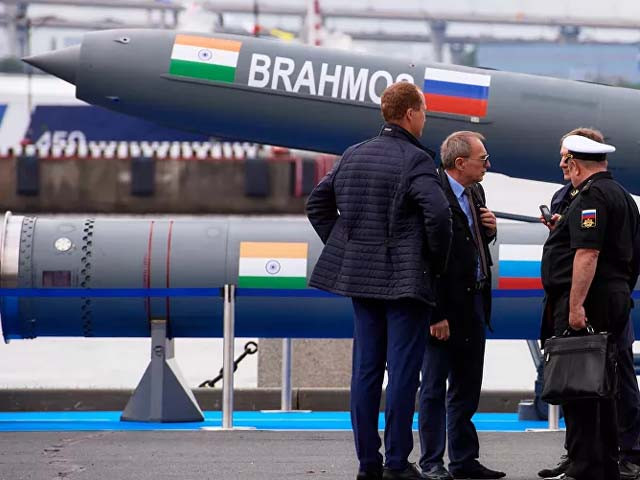Roman Babushkin, Deputy Chief of Mission of the Russian Embassy in India, announced his country’s intention last week to export the jointly produced BrahMos supersonic missiles to the Philippines. According to Indian outlet ThePrint, the exact words that he said during the virtual media conference were:
“One of the flagship projects is the JV BrahMos, all tests of contemporary versions are successful. Planning to gradually increase the range of these exclusive missiles and, of course, begin exporting to third countries, starting with the Philippines. This is a continuous process.”
Mr. Babushkin’s policy declaration confirmed reports from last year that Russia was planning to export these potentially game-changing missiles to the South China Sea. The author even wrote about that possibility back in August 2019 in his analysis about how “Russia Might Use BrahMos Missiles To ‘Balance’ China In The South China Sea”. It’s of course Moscow’s sovereign right to conduct its “military diplomacy” – the use of military means, especially exports, for political and even economic ends – however it so chooses, but observers must nevertheless be aware of the risks inherent to this strategy as it relates to China.
Russia has been gradually moving closer to India at the perceived (key word) expense of China, as the author argued in September when asking “Is Russia ‘Abandoning’ Or ‘Recalibrating’ Its ‘Balancing’ Act Between China & India?” It had the chance to readjust this dynamic once more earlier this month in response to influential BJP official Subramanian Swamy castigating India’s historic relationship with Russia, which the author opined about in his piece about how “Extreme Pro-US BJP Ideologues Mustn’t Be Allowed To Sabotage Russian-Indian Relations”, but evidently Moscow decided to stay the course without any changes as was seen last week.
This presumably speaks to the enduring grand strategic importance that Russia places on its relations with India, especially vis-a-vis China, which Moscow envisions both Great Powers jointly “managing” out of their shared interests in doing so. It’s likely in pursuit of this why Mr. Babushkin declared that Russia will export its jointly produced BrahMos supersonic missiles to Philippines even though that country is involved in a territorial dispute with China and would likely use those weapons only against the People’s Republic in any possible military scenario since it’s unrealistic to imagine it fighting against any of its other neighbours.
In other words, Russia might be sending the signal to China that it wants to “balance” Beijing in the South China Sea in partnership with India, potentially replacing – or even in the unlikely scenario of a Russian-American rapprochement (“New Detente”), complementing – the Quad after the recently clinched Regional Comprehensive Economic Partnership (RCEP) agreement reduced that military bloc’s influence there. The author wrote about the latter observation in a recent piece of his about how “RCEP Took The Wind Out Of The Quad’s Anti-Chinese Sails”, but Russia’s planned BrahMos exports to the region might change that calculation.
To be absolutely clear, Russia has no stated or implied intention to aggressively “contain” China like the US and India do, but it seems to be “passively facilitating” their efforts under the guise of “balancing” in order to advance what it rightly or wrongly regards as its national interests. These appear to be the military-driven comprehensive improvement of strategic relations with India, which it in turn hopes to leverage for the purpose of courting more regional partners in Asia such as the Philippines through the potential game-changing export of BrahMos supersonic missiles which would only be used against China in any realistic wartime scenario.
At the same time, however, Russia always does its utmost to comprehensively improve relations with China as well. The two neighbouring Great Powers are close military partners, and Moscow is even helping Beijing develop a missile-attack warning system that only Russia and the US have, among other joint projects of huge strategic significance. There is no credible risk of a direct or proxy war exploding between them even in spite of Russia's risky BrahMos gamble in the South China Sea. If anything, Russia is selling those missiles because it feels confident whether rightly or wrongly that China will not react in any negative way to that development.
Nevertheless, it must be pointed out just how risky this policy is despite Russia having the sovereign right to practice it. China is unlikely to directly respond or even publicly comment on this development even if it comes to pass, but that doesn’t mean that it won’t take notice of it and possibly interpret this move as a very unfriendly one against the spirit of their strategic partnership. The worst-case scenario would be if China regards the geographically expanding scope of the Russian-Indian military partnership as aimed against its interests, which could trigger a self-sustaining cycle of distrust that might culminate in a security dilemma.



COMMENTS
Comments are moderated and generally will be posted if they are on-topic and not abusive.
For more information, please see our Comments FAQ